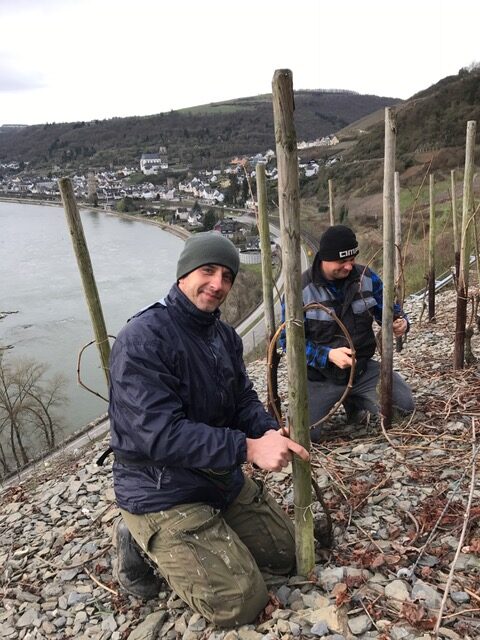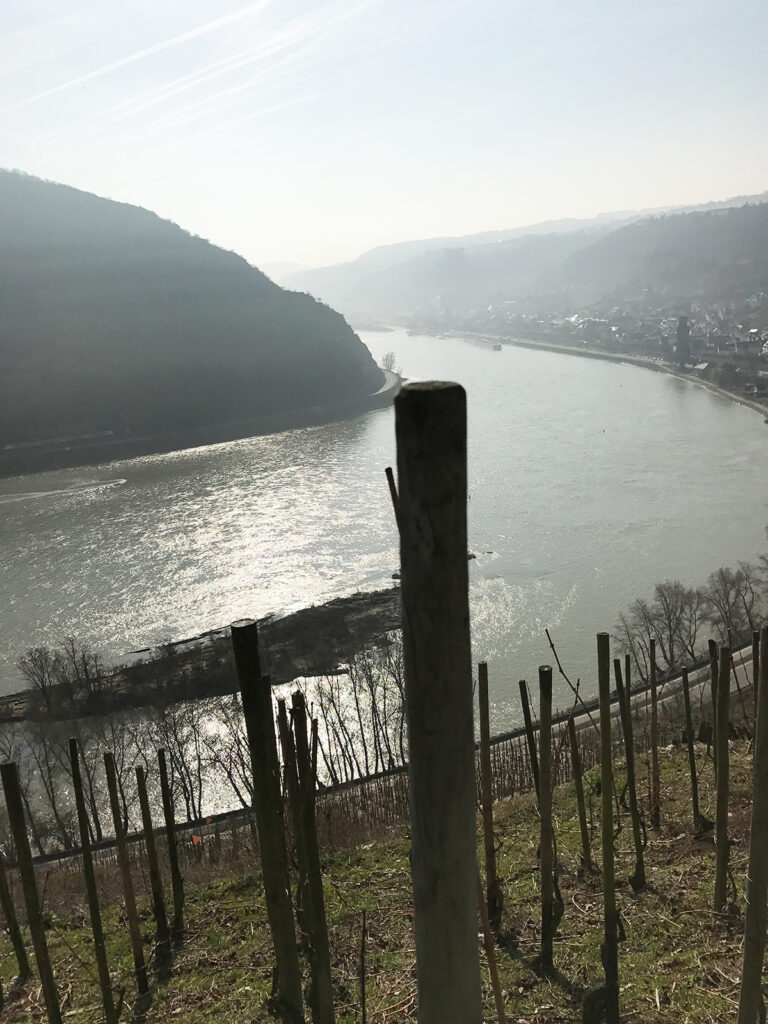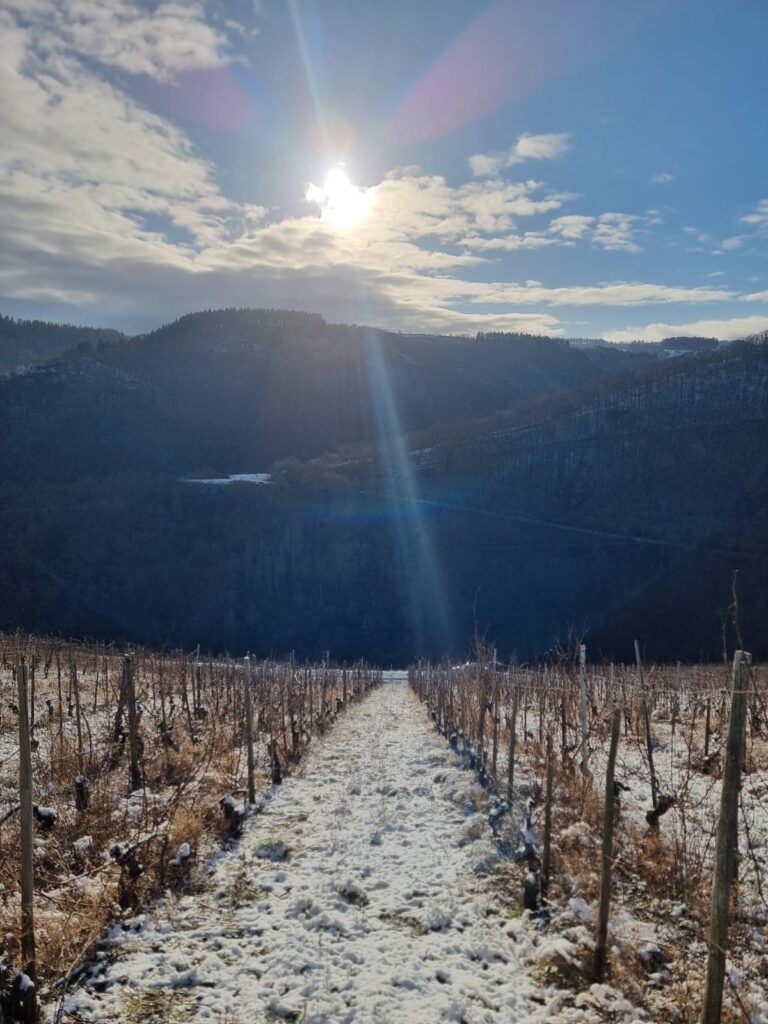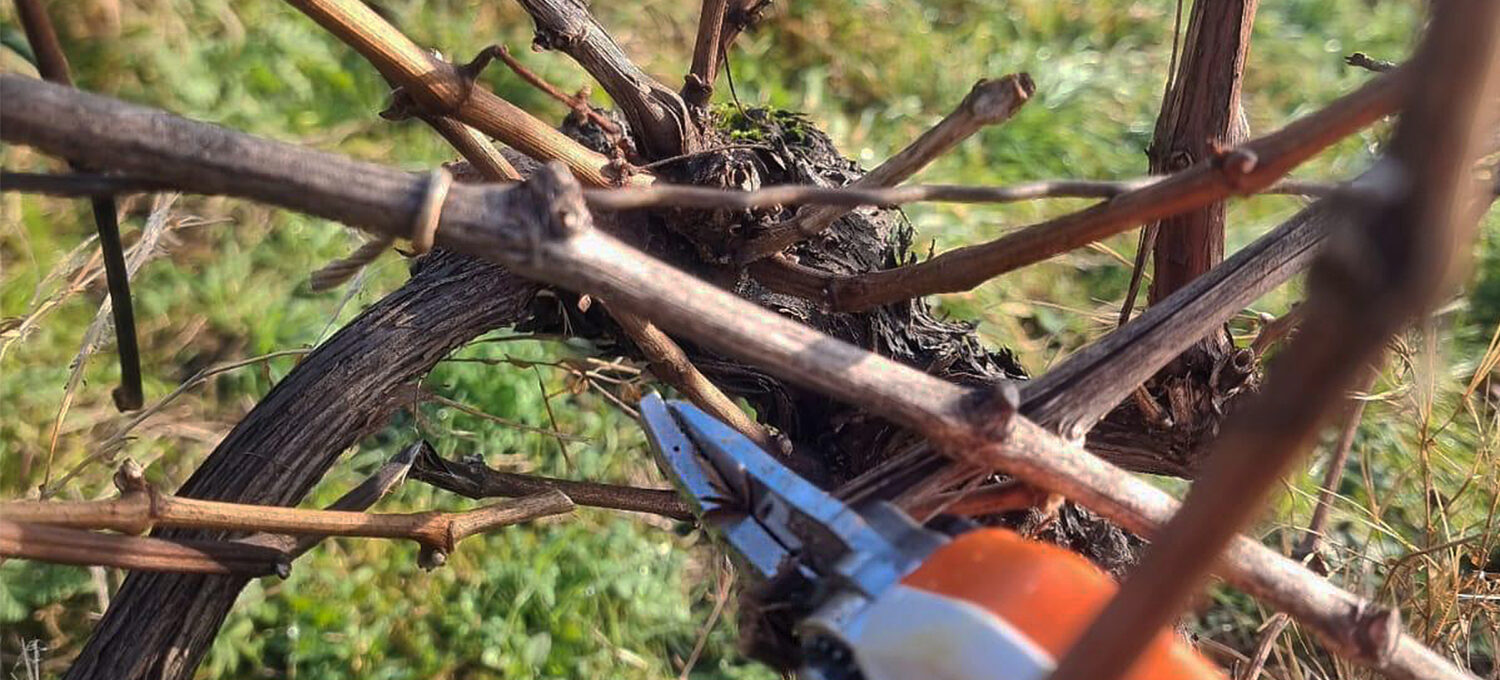


Pruning is a very important step in the training of the vines in the vineyard and is a key moment in the growing cycle of every winery, naturally also for us. Pruning is done usually from December to February and is especially important, since it determines the basis for the following grape harvest. During this time, we cut the vine back, in favor of the quality and the crop yield for the upcoming growing season. As seen on the pictures, snow, rainfall and constant cold can be a challenge during this time of year, but our highly motivated team is doing their job well and adjusts ifself to the cold.
The main purpose of pruning is to regulate the growth of the vines. This reduces the growth of the vine, as it is naturally a vigorously climbing plant. Fruit-bearing shoots only develop from the buds of one-year-old wood. To ensure that the fruit is distributed over as few shoots as possible, we remove all but one of the annual shoots. This first yield-reducing measure has a massive impact on the quality of the grapes and thus the later wine. By removing shoots and old, fruit-bearing pieces of wood, the vine is able to concentrate its energy on the remaining, healthy shoots.
Pruning not only has an impact on the health and growth of the vines, but also on the quality of the future wine. By specifically controlling the number of shoots, we influence how much sun and air the grapes receive and how well the vines are able to utilise their nutrients. This in turn has a direct influence on the flavours and character of the wine.
The wood left over from pruning remains entirely in the vineyard and is mulched under the soil during the summer and used as a natural fertiliser.
Once the vines have been pruned, the next step is to attach the fruiting cane horizontally to the trellis system. This technique serves to guide the shoots into an organised structure, which promotes ventilation and exposure of the plant. It also makes harvesting and our other maintenance work throughout the growing season easier. The first picture shows our team tieing the vines to a wooden pole in our oldest parcel, the “In der Rheinhell”.
